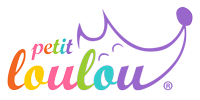How Contrast & Colours Help Your Child’s Development
Share

There is no doubt that learning about and understanding the significance of different colours is an essential building block in a child’s development. Colour is used in early mathematics, as a language tool to describe emotional states, and as a means of creative expression. But the importance of colour in a child’s development doesn’t stop there. Early exposure to contrasting colours both stimulates and encourages a child’s visual growth.
0 to 4 months
When a baby is born, the back layer of the eye known as the retina isn’t fully developed, just like the brain. In order for both to grow and reach maturity, it’s important to stimulate your baby’s vision. Visual stimulation will cause nerve cells to fire and connect, thus developing a baby’s optic nerve and visual brain center. So, how can you best stimulate a baby’s vision?
The Smith-Kettlewell Eye Research Institute in San Francisco tells us that from birth to around 3 months of age, a baby can mainly see shades of white, gray, and black. What this means is the best colour palette for your newborn’s nursery is black and white! Contrasting monochrome colours in different shapes and patterns is actually the best way to stimulate a baby’s vision.

Decorate your child’s nursery with striped black and white curtains, bold throws, and toys in light and dark contrasting colours, and these elements will serve to increase your child’s attention span, encourage nervous system growth, and even improve their memory!
Pro-tip for supporting visual development at this stage:
- Bring toys and stimuli to within 8-10 inches of your baby’s face, so they can focus on the object. Remember to go slowly and don’t overdo it — you don’t want to strain baby’s eyes either! Alternate objects and angles to ensure you are stimulating both eyes equally.
Petit Loulou’s plush fish, Melvin, is a perfect example of a toy high in contrast and even higher in developmental benefits for your child. You can order Melvin for your baby here!
4 to 8 months
By about 4 months of age, most babies are starting to see colour, and once again they have a preference! Babies like bright primary colours, as these are the most exciting and stimulating shades. Switch out their black and white blankie, for a bright red one, and start introducing new vibrant toys. Baby will be overawed, and their brain will continue to thrive!
At this stage, babies also begin to develop depth perception. This means they will be able to see objects farther away, and they will start to recognize familiar faces. They will be able to concentrate for longer periods of time, and many delight in watching their own fingers and toes wiggle! This is also the beginning of hand-eye coordination. Now that they can see their extremities, they will start to use them!
This is the perfect stage in your child’s development to introduce some more concrete toys, like wooden blocks to aid in fine motor development. Hanging a mobile is another great addition at this point, as your child will love watching the interesting shapes and how they move through the air!

Pro-tip for supporting visual development at this stage:
- Give your baby room to roam! Allow them to play on the floor, and explore their environment for themselves. All the senses tie into each other, so if your baby can touch and feel things, this will aid in visual recognition. Simple games with patterns, like “patty cake” can also help with their visual coordination.

Petit Loulou’s musical cloud baby mobile incorporates vibrant primary colours and would be an ideal addition to your baby’s nursery at this stage. You can order a musical cloud mobile for your baby here!
8 to 12 months
Around 8 months, a baby’s colour vision is generally well developed. This is the stage at which you can introduce all sorts of different colours to your child, in the form of toys, decorations, and even by wearing uniquely coloured clothing! Continuing to expose your baby to a wide range of colours will feed the development of their brain, and help them to make colour connections quickly.

At this point, babies are working hard on their hand-eye coordination, and developing their motor control. These skills are essential as they will enable baby to pick up and grasp objects, by focusing on them and exercising their fine motor muscles in concert with their eyes. It’s a good idea to let baby start on finger foods at this age, as getting that tasty cracker in their mouth is great motivation for practicing their grabbing skills!
Pro-tip for supporting visual development at this stage:
- Our favourite way to encourage visual development at this age is by reading books with your child! This will expose them to a rainbow of colours, shapes, patterns, and sounds. They can even practice their hand-eye coordination by flipping the book’s pages themselves. Discover our favorite books here.
Petit Loulou’s customizable hedgehog comes in a wide variety of colours and, with its interesting raised texture, is the ideal toy for a child in this age range. You can order a custom hedgehog for your child here!
What are some good ways you have found to excite your child's world view? I would love to hear about them! Share with me in the comments below, and don't forget to subscribe to my newsletter for more blogs like this one and all the latest Petit Loulou news.

71 comments
I love the spiky the hedgehog…off to see about an adoption!
Thanks for the fantastic information. I love this.
Very helpful
I love the information provided by age! That is so helpful to know what milestones your child hits at what age! Thank you for the great information
really good info to have